

































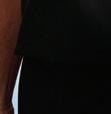
















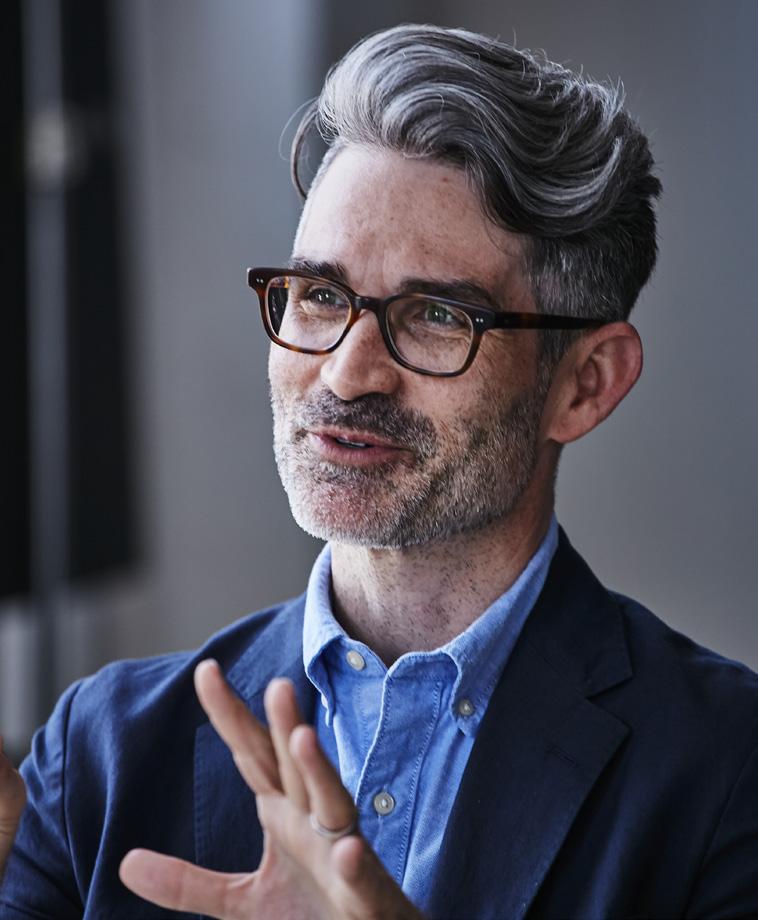

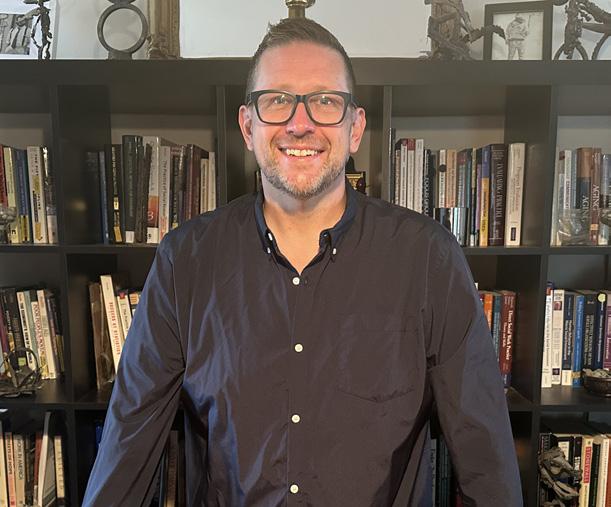






Volume 30, Issue 766 • October 3-16, 2024
Managing Editor Noah Mitchell 612-461-8723
Editorial Assistant Linda Raines 612-436-4660
Editor Emeritus Ethan Boatner
Contributors Layla Amar, Lakey Bridge, E.B. Boatner, Buer Carlie, Natasha DeLion, Arthur Diggins, Alyssa Homeier, Terrance Griep, Elise Maren, Jen Peeples-Hampton, Linda Raines, Alexander Reed, Gregg Shapiro, Randy Stern, Susan Swavely, Carla Waldemar, Todd P. Walker, Emma Walytka, Spencer White
Vice President of Sales & Advertising
Barry Leavitt 612-436-4690
Account Executives
Nathan Johnson 612-436-4695
Richard Kranz 612-436-4675
Sales & Event Administration
Linda Raines 612-436-4660
National Sales Representatives
Rivendell Media 212-242-6863
Creative/Digital Director Mike Hnida 612-436-4679
Publisher Lavender Media, Inc.
President & CEO Stephen Rocheford 612-436-4665
Chief Financial Officer Doug Starkebaum 612-436-4664
Administrative Assistant Michael Winikoff 612-436-4660
Distribution Metro Periodical Partners 612-281-3249
Founders George Holdgrafer, Stephen Rocheford
Inspiration Steven W. Anderson (1954-1994), Timothy J. Lee (1968-2002), Russell Berg (1957-2005), Kathryn Rocheford (1914-2006), Jonathan Halverson (1974-2010), Adam Houghtaling (1984-2012), Walker Pearce (1946-2013), Tim Campbell (1939-2015), John Townsend (1959-2019), George Holdgrafer (1951-2024)
and phone number. Unsigned letters will not be published. Priority will be given to letters that refer to material previously published in Lavender Magazine. Submit letters to Lavender Magazine, Letters to the Editor, 5100 Eden Ave, Suite 107, Edina, MN 55436 or e-mail editor@lavendermagazine.com.
For our Privacy Policy, go to LavenderMagazine.com/resources/ privacy-policy
LAVENDER MEDIA, INC.
5100 Eden Ave, Suite 107, Edina, MN 55436
612-436-4660 Office
612-436-4660 Subscriptions/Distribution
612-436-4660 Lavender Advertising
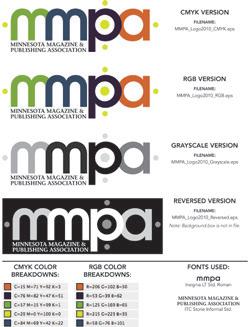



BY NOAH MITCHELL
I hate moving. If you know me, you’ve heard me say this. Every time I move.
I’m a big routines person, for better or worse. When I make a habit, good or bad, it sticks, hard. I live and die by my to-do list. Structuring and planning my day is how I manage my anxiety and keep the things I can control in order.
Unfortunately for me, I’ve just moved into a new place, again.
Moving throws all of those routines out the window. Waking up in an unfamiliar place means starting my day off on the wrong foot. That’s followed by rummaging through suitcases and duffel bags to find my clothes, sifting through kitchen appliances to find space on the counter to make my breakfast and trying to figure out where on earth my face wash ended up before I even really start my day.

Undecorated walls make the new apartment feel more like a holding cell than a home. At least two household appliances are in desperate need of attention. There’s no garbage disposal in the kitchen sink? You know the drill.
After a couple of weeks of wallowing in the dust and grime of previous tenants (because of course they didn’t really clean the place before I got there) and my own self-pity, I wondered if I really had to feel this way. Aren’t people usually excited to move? Surely there has to be a reason.
I’m guessing a lot of moving-related excitement can be chalked up to exploring a new city or neighborhood, getting cozy with a new roommate (of the platonic or wink-wink nudge-nudge variety) or owning a home for the first time. As someone who moved from one end of a neighborhood to the other and will require an economic
BY E.B. BOATNER
or divine miracle to ever own a home, I’ve been denied these joys.
However, admittedly after a considerable amount of time spent complaining, I’ve decided to try to make the most of my move. I’m using it as an excuse to finally start building some of the habits I’ve been trying to develop for a while. I’m waking up earlier, going to bed earlier and actually making time to read before bed more than once every two weeks. The chance to put up some fun new decorations doesn’t hurt either.
So, whether you’re moving this fall, finally renovating that bathroom you’ve always hated or just finding a new houseplant that you promise you’ll keep alive this time, don’t miss the chance to make the most of it! A change to your home is as good an excuse as any to make a positive change to the life you’re living in it.
A friend and I recently agreed that folks didn’t used to chat about the “good old days” when conservatives had liberal friends, and vice versa. I recounted my surprise upon learning my best friend’s parents were voting for Adlai Stevenson, unlike my own, who were voting for Ike. It was 1952; we were eleven.
I recalled “sophrosyne,” an ancient Greek concept that, in the well-balanced individual, led to qualities of temperance, moderation and self-control. I’m more liberal than my parents were, but two points of view always seemed logical, each able to curb the other’s wilder edges to create the reasonable.
War has been a human hallmark for millennia, but after August 6, 1945, we’ve known that mankind is capable of escalating to the end (ours, though perhaps not the cockroach or horseshoe crab). Even with that deterrent, we’ve twice avoided Armageddon — by a whisker — only through an enemy’s judgment call.
During the Cuban Missile Crisis, Vice Admiral Vasili Arkhipov prevented a Russian sub from launching a nuclear torpedo at an American aircraft carrier on October 27, 1962. Sophrosyne through non-action? In 1983, on October 26, Lieutenant Colonel Stanislav Petrov received the report a missile had been launched from the US, to be followed by more.
Judging the report false, Petrov, against military protocol, did not pass along that information. How thin is the ice upon which humanity skates.
Short of war, innuendo, sly repartee, and insults remain a staple of human exchange:
Lady Astor: ”Mr. Churchill, if you were my husband, I’d put poison in your tea.”
Churchill: “Madam, if I were your husband, I’d drink it.”
In politics? Especially:
MP to Benjamin Disraeli: “Sir, you will either die on the gallows or of some unspeakable disease.”
Disraeli: “That depends, sir, on whether I embrace your policies or your mistress.”
The burning question in 1852, was whether Kansas should be admitted to the Union as a free or slave state. On May, 22, Senator Charles Sumner (R-MA), vocal proponent of free Kansas, was in his chamber when Representative Brooks, kin to Andrew Butler (D-SC), a slave-Kansas proponent earlier excoriated by Sumner, entered the chamber and thrashed Sumner unconscious with a metal-tipped cane. Sumner had earlier referred to Butler’s “ugly mistress … I mean that harlot, Slavery.” Perhaps the past wasn’t so rosy.
Nate Silver’s “The Signal and the Noise” of-
fers some insight. Up until 1440, humanity was not saturated with information, and what there was stayed at the top. Then, Johannes Gutenberg created the printing press, allowing information to accumulate exponentially and fast. Rivers of information, but while a scribe’s error in a manuscript might be copied to others, one by one, press runs reproduce them by the dozens, hundreds, and more.
The information explosion, notes Silver, not only produced more than any individual could process, it brought unintended, unpredictable consequences — war — and led into the Industrial Revolution, where individuals like Ada Lovelace foresaw applications of Charles Babbage’s new machine beyond pure calculation. And so on to the internet and our current social fragmentation.
Today, everyone has access to more information than can be accurately processed, of wildly varying quality. Silver posits that facing “too much,” the individual engages selectively, then makes allies with of those in agreement.
How to return to my folks’ “We’re voting for Ike, your friend’s parents prefer Adlai,” a simple statement, not a hill to die on, or separate a childhood friendship? It’s not a simple question, and I’ll not hazard an answer. I don’t have enough information.


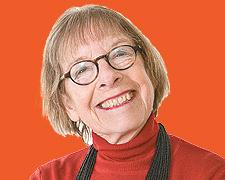
BY CARLA WALDEMAR

When I was a little kid, my granny told stories about Europe; it was a place you came from, not where to head on vacation. Today, that’s history. It’s as simple as visiting Brainerd but with better food and richer heritage. To make my vacation virtually stress-free, I booked a Viking River Cruise and left the driving to the captain of the 188-passenger ship Vali, our home for a leisurely two-week sail from Budapest to Amsterdam.
We anchored aside the Hungarian city’s iconic Chain Bridge, just steps from its bustling, 19th-century covered market (stock up on necessities like goose-liver pate, sweet or spicy paprika and roosters’ testicles). Fortunately, Chef Milos chose instead to prepare Hungarian goulash, chicken paprikash and poppyseed dumplings — the star of this evening’s menu, where nightly choices always include Norwegian salmon, juicy steaks, and classic local favorites. Wine and beer flow freely at no extra charge with meals, and the staff soon learns your name. Our waiter, Jayson, who multi-tasks as an aspiring comedian, assures me that the breakfast’s orange juice is fresh-squeezed: “I squeezed the carton myself.” (Never mind: The after-dinner entertainment in the lounge features a variety of fine musicians.)
A city tour of each port is included at no extra charge. In Budapest, we careened past the famous wedding-cake façade of Parliament on to churches like St. Stephen’s, whose saintly arm you can view in its golden casket, on to St. Michael’s, boasting the city’s oldest organ (frequent concerts) and the Jewish ghetto’s grand synagogue of 1859, largest in all Europe. We spy the frilly Opera House en route to Heroes’ Square with its larger-than-life shades of Soviet occupation.
By morning’s light, we set sail down the mighty Danube. Eggs Benedict for breakfast girds me for a day on the open-air sun deck as we glide by pleasure boats and husky barges, deep forests and classic villages posing for a picture postcard. We give a wave to Bratislava, the capital of Slovakia, grab a nap, or trot laps along the deck’s running track (golf putting and shuffleboard, too). At dinner (open seating at tables for six) we chat with newfound friends from Australia, Canada, Texas, Florida and beyond while savoring Weiner schnitzel and Sacher torte in homage to Vienna, our next port of call.

The Good Life is celebrated in this gorgeous city, with its generosity of opulent Baroque curlicues, plaster adornments frosting palaces and concert halls honoring homeboys Mozart, Beethoven and Haydn, to name but a few. We end our walking tour at St. Stephen’s Square, anchored by its breathtaking cathedral, and then, in our free time, choose to turn our steps in a more somber direction to visit the Holocaust memorial, inscribed with the names of death camps.
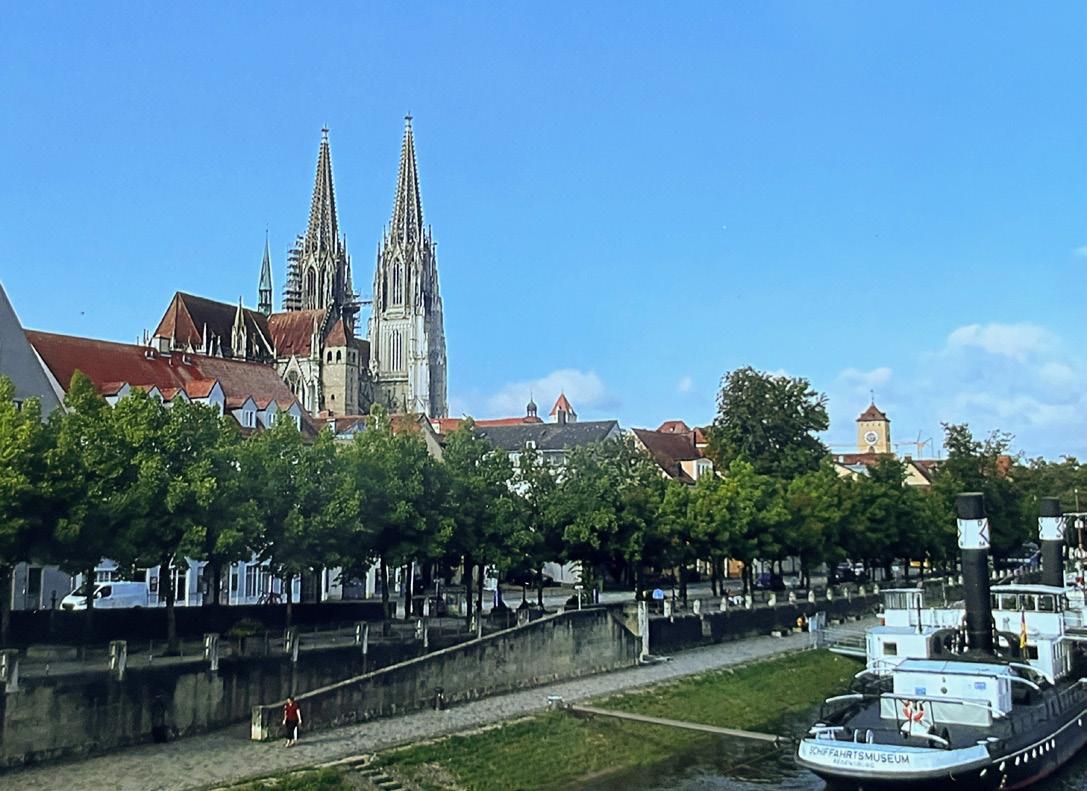
A pal and I queue up for a table at buzzy Café Central, where, ever since 1876, waiters in formal wear have delivered schnitzel, beer and fancy coffee drinks to customers perusing newspapers attached to long sticks. What to do on our free afternoon? The famed Lipizzaner riding school? The Opera House? We vote for the golden-domed Secessionist Museum to squint at its cache of once-risqué paintings by outcasts such as Gustave Klimt, then on to the Leopold Museum, home to equally daring artists.
Tomorrow, we sail into Melk to ogle its famous Abbey, founded in 1089, and its petite chapel. Scurrying back to the sun deck, we’re set to enjoy the most scenic stretch of the swirling Danube, where one medieval fortress-cas-

tle after another anchors a hilltop. Oh, look! That’s the one where Richard the Lion-Hearted was locked up! And here comes the Abbey itself, an ultra-ornate treasure house of gold, gold, and more gold.
The Romans beat us to tiny Passau, our next stop along the river. Today it’s a haven of artists’ galleries lining winding cobblestone alleys, all leading to yet another St. Stephen’s Cathedral (three so far, and counting) and the scary house of the town executioner (now a comedy club; go figure).
Back aboard, the ship’s Austrian flag is replaced by the gold, red and black bars of Germany’s banner as we head to Regensburg. Too “unimportant” to suffer World War II’s bombing raids, its 1,200 UNESCO-protected buildings still stand to greet us. One of these belonged to Otto Schindler of “List” fame. The town’s synagogue was destroyed, but its outline lives on in the form of memorial benches. Under a stone bridge from 1735, we happen upon a busy sausage stand, where we chomp our first mustard-gilded bratwurst. Just beyond, the magnificent stained-glass windows of St. Peter’s Cathedral (1273) illuminate our spirits.
The first few locks through which we sailed brought everyone on deck to witness our watery descent. By now, we barely notice — turning our eyes, instead toward Wertheim, where take-no-prisoners guide Ursula marches us through the oft-flooded town. (Was it the doing of witches? In Wertheim, she instructs, most of those thus convicted were, ahem, men. And: “What do you call a beautiful woman in Wertheim?” she asks. “A tourist.”)
Door frames dated 1523 lead us to Market Square’s half-timbered houses, where gossip was whispered from window to window. In the remains of its synagogue, Ursula reveals the town’s Jewish history, laced with pogroms. “I knew nothing about it while growing up,” she recalls. “Back then, nobody talked about it.”
To read the full article, visit LavenderMagazine.com.


When Rick Dildine first interviewed at the Children’s Theatre Company, he couldn’t shake off a very particular thought: “I think I found my people.”
I had the chance to catch up with Dildine just over a month after he began his role as the theater’s Artistic Director, and he said that that initial gut feeling has been validated.
“That [feeling has] rung true in the first month,” he affirms. “I think I found my people.”
Our conversation covered his first month and a half at the Children’s Theatre, his goals for his work with CTC, and how he is adjusting to life as a Minnesotan.
Unsurprisingly, Dildine has a rich background in the arts. He has worked at several colleges and theaters. His most recent work was in two back-to-back roles as an Artistic Director for two separate Shakespeare festivals. The first of these roles was at the Shakespeare Festival in St. Louis, where he stayed for nearly ten years. The second was at the Alabama Shakespeare Festival, where he worked for just over five years.
In both roles, he was recognized as a vital member not only of the organization he was serving but also of the communities those organizations were part of — both arts and otherwise. His work at the Alabama Shakespeare Festival made great strides in diversifying its audience and artists through many methods, including reaching young BIPOC artists with partnerships built with public schools and colleges.
Moving to CTC is exciting for Dildine. “I’m at a place in my life where the most important thing I can be doing as an artist is making something for young people — it is the most noble task an artist can undertake,” Dildine says, then pauses. “CTC has an incredible reputation … its commitment to creating for young people and their community, its rigorous thoughtful work that speaks to young people and their communities.”
Dildine views his role as CTC’s Artistic Director first and foremost as one grounded heavily in understanding the context in which the theater already exists. In his first month, he has focused on listening to people involved in and passionate about this theater. This priority is even visible in the way he conceptualized the redesign of his office.
“I think space dictates motion. I wanted to create a space that people want to come to,” he explains, moving out of the way so his webcam can focus on the cluster of chairs just behind his desk, awash in natural light. “It’s lovely — it’s more of a sitting space now because I wanted artists and our staff to want to come here and brainstorm ideas.”
As far as any changes he might make or visions that he has as Artistic Director, Dildine says, “It’s too early for me to say anything specif-
Continued on page 14
It’s the inspiration. The place. The experience. Captured in one perfect moment.
Explore a state park or trail at mnDNR.gov/fallcolors



ic.” He smiles thoughtfully before he continues. “Visioning is going to take a little while … The most important job of an artistic director is to listen to the community and then as elegantly as possible put together a slate of shows that respond to that community. It starts from listening.”
Dildine has enjoyed digging in on that process at CTC. “One of the unique things about CTC is that we have a lot of long-serving folks,” Dildine says. “That speaks to the culture of this place: the impact of its mission. It’s been so rewarding to walk the halls and hear from folks who have been here for twenty to thirty years.”
These conversations often include an easy icebreaker that deftly gets to the heart of the organization: What are the three things that every CTC show has?
“It has been wonderful to hear people’s anecdotes and stories,” he says with a smile. “Art, magic — a theatrical element that can’t be captured on screen. [Everyone here has] great passion around creating stories that are inclusive of this community we service.”
The groundwork left by previous Artistic Director Peter Brosius does not go unappreciated. “What I think Peter B was so brilliant at was using this building to create community,” muses Dildine. “I want to keep the theater a place where real conversations happen that center young people. I’m particularly interested in programming outside of our core … so I’m thinking about under five and teens.”
Dildine continues: “There is some exciting work happening for those groups … Theater for the very young is inventive and rewarding and it’s important to be with young people in their teenage years. For me, those were some pretty tumultuous years.”
There are already works in process that align with this goal. For example, “Drawing Lessons”, which will run at CTC from October 8 through November 10, is an innovative, visually stunning story about a Korean
American girl and visual artist who is grappling with her identity. This play is targeted at upper elementary-aged students all the way through high school.
“This is the first play to have a full-scale production from a large commission program that we are a part of called Generation Now,” Dildine says. “Theater for multi-generational audiences can be euro-centric and Generation Now seeks to grow the canon of work for young people — specifically BIPOC audiences.”
Dildine, his husband, and their tuxedo cat (Abraham Lincoln) have enjoyed acclimating to the Twin Cities so far.
“My husband and I got a place in the North Loop,” Dildine says. “The city is phenomenal. The people are lovely. There is so much to do here.”
When we chatted, Dildine listed off several favorite dining establishments (Bellecour Bakery and Billy Sushi topped the list) and mentioned his delight upon realizing that Stonewall Sports is in the Twin Cities.
“I was so excited to know that there is a Stonewall league here,” he says. “I’m looking forward to meeting [the] LGTBQ community.”
Of course, Dildine and his husband (who works in the museum business) have also been dipping into the local arts scene. The pair was especially impressed by the Keith Haring exhibit that recently closed at the Walker.
“I hope queer people get to go see that. It’s such an important part of our history,” Dildine says.
The passion that Dildine has for building and plugging into already existing communities was palpable throughout my conversation with him and is clearly a core part of his personality — not just his professional identity. He is enthusiastic about the new chapter he and his husband are starting here in the Twin Cities, both as artistic professionals and members of the LGBTQ+ community.


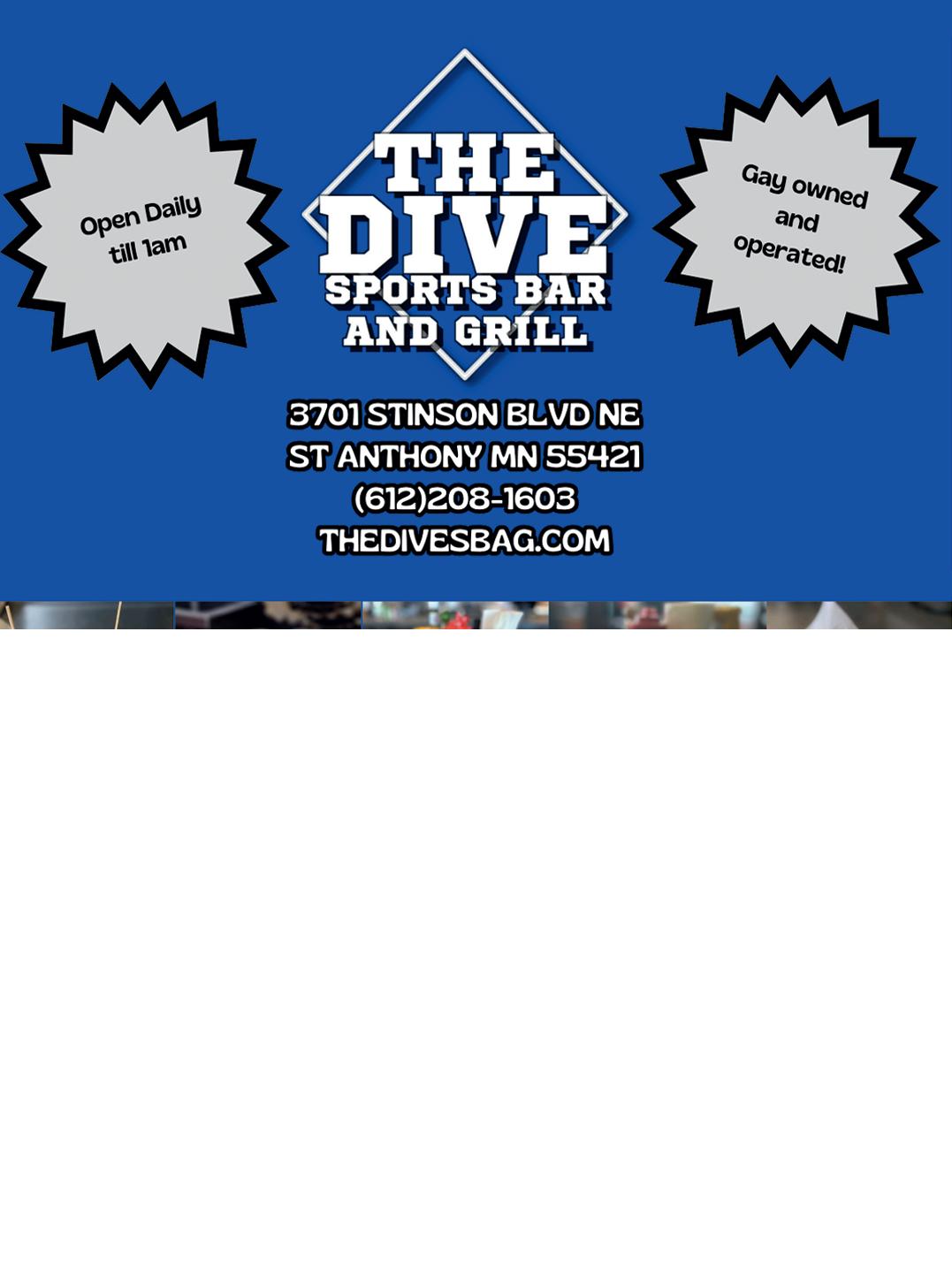


Come out (of the closet) to the Twin Cities Quorum National Coming Out Day Luncheon! This exciting event will gather Minnesota’s LGBTQ+ community to celebrate the important work they do for their queer communities, families, and friends. The event will take place on Friday, October 11, at the Minneapolis Convention Center. It will kick off at 10 a.m. with Community Networking and a Marketplace Expo, where members of the community can walk around and explore several wonderful and supportive businesses in their neighborhood. Local businesses, community members, and allies can choose to attend the event in person, virtually, table with their business, or even purchase sponsorship tickets — the possibilities to connect on National Coming Out Day are endless!
Twin Cities Quorum is Minnesota’s local LGBTQ+ chamber of commerce, and they are excited to host their annual National Coming Out Day Luncheon. The luncheon is Quorum’s flagship event and is a great opportunity to connect with and learn from others in the community who navigate running an openly LGBTQ+ business. The event was started 31 years ago as an avenue for connecting community members and allies through the meaningful and personal journey of coming out. Each year, Quorum looks forward to deepening the connections within the queer community.
Quorum has a spectacular staff dedicated to providing a platform for local LGBTQ+ businesses and workers. Rebecca Waggoner is Quorum’s executive director and has had the pleasure of serving her community at Quorum for almost ten years. She says that her role “involves leading a mission of creating a thriving LGBTQ+ and allied business community in Minnesota, through advocacy, education, and connection.”
Waggoner deeply understands the importance of helping organize a queer community, exclaiming, “I think I might have the best job in the world!”
Waggoner encourages business and community members to attend the luncheon because “it’s a powerful reminder of the importance of inclusivity in both professional and personal spaces. Attendees walk away inspired and empowered, ultimately building meaningful connections within a supportive network.”
Photo by BigStock/SeventyFour
The National Coming Out Day Luncheon is a space where everyone can feel seen, heard, and celebrated. Waggoner believes that “Queer representation in the workforce is essential because it makes commonplace diversity, equity, and inclusion while also breaking down systemic barriers. When queer people can show up as their authentic selves at work (or anywhere in their lives), it not only strengthens businesses but creates inclusive environments where everyone can thrive.”
Quorum provides a platform for LGBTQ+ and allied individuals and businesses to connect, grow, and succeed. Waggoner explains that “by offering networking, educational opportunities, and certifications, we empower queer-owned and allied businesses to thrive.”
Quorum truly understands that LGBTQ+ representation in the workforce is imperative for the livelihood of queer people. Waggoner continues, “We also advocate for the economic benefits of inclusivity, showcasing the strength of a diverse workforce. Our events and initiatives create safe spaces where queer individuals can build relationships and contribute to their communities’ economic and social well-being.”
Quorum understands that living openly has a profound effect on many aspects of life, whether it be business or personal. Quorum believes that the realities of living an authentic life are deeper than being “out.” They acknowledge the complexities of choosing to live openly about one’s LGBTQ+ identity and choose to celebrate the joy of living authentically. Waggoner takes pride in her queer identity and she is excited to see everyone at the Luncheon.
“One thing I love about being queer is the sense of community and solidarity. There’s a unique strength in how we uplift and support one another, which makes our connections that much stronger. Being able to live authentically and advocate for others to do the same is something I find deeply fulfilling,” Waggoner says.
Quorum’s luncheon highlights the importance of connecting with others in our community who share similar values, ultimately celebrating the courage and authenticity of coming out. So come out on October 11 to this caring community event and meet all the other people who share the same vision of creating a safe and empowering space for the LGBTQ+ community!
Twin Cities Quorum National Coming Out Day Luncheon
MFriday, October 11, 2024, 10 a.m. to 1:30 p.m. Minneapolis Convention Center 1301 2nd Ave. S. Minneapolis, MN 55404 www.twincitiesquorum.com/event-5802153

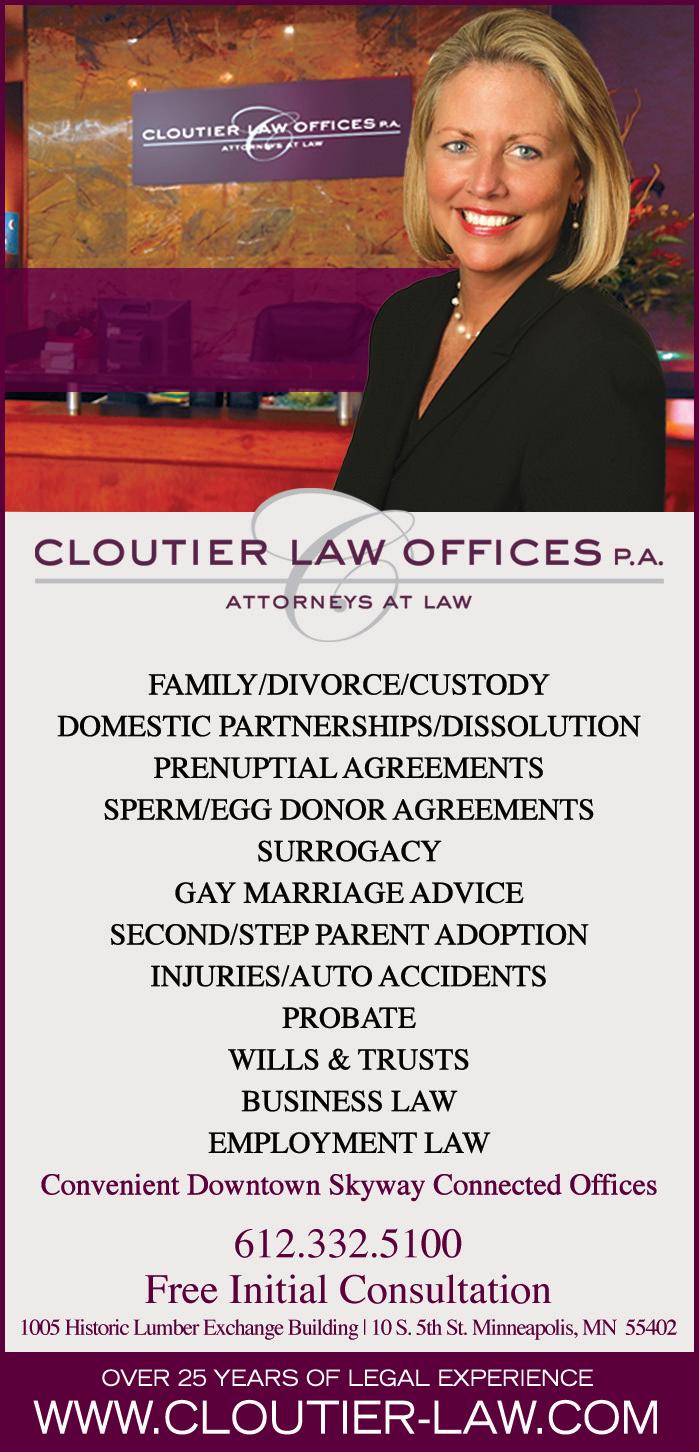





BY RANDY STERN
You may have read his books in the past. Titles such as “And The Band Played On” and “Conduct Unbecoming” were mandatory reading for our community when they were published. He also beautifully told the story of one of the most important leaders in the struggle for LGBTQ+ rights: Harvey Milk.
Randy Shilts was a pioneer in journalism, being the first LGBTQ+ person to come out at a daily news publication, the San Francisco Chronicle. His byline was visible at the time when our community rose to prominence in transforming the “gay mecca” out of a fading neighborhood throughout the 1970s. Shilts covered the beat of the Castro, as well as Polk Street and SoMa, through the emergence of Milk in city politics, the double murder at City Hall in 1978, the White Night Riots protesting the verdict handed down to Milk’s assailant and the AIDS crisis that devastated the city’s gay and bisexual male populations.
The three books Shilts wrote were testaments to this time. Legacies that resonate beyond his primary beat, San Francisco’s 49 square miles and its LGBTQ+ community. Now, the story of our storyteller has been lovingly told by one of the figures from our own community: Michael G. Lee, Ph.D.
In a previous life, Lee was involved with the Minnesota AIDS Project. After his stint at MAP, Lee started his doctoral studies at the University of Minnesota-Twin Cities. Midway through his doctorate program, Lee took a “real interest in the history of AIDS organizations.” At the time, a lot was known historically about their origins in the gay activist tradition, but not a lot had been written about it, Lee further explains.
The result is Lee’s first book, “When The Band Played On: The Life of Randy Shilts, America’s Trailblazing Gay Journalist.” The book is due out on October 8, published by Chicago Review Press.
Lee’s initial research connected early writings on the LGBTQ+ community and the onset of HIV/ AIDS into the community with Shilts’ own work as a journalist and an author.
“[Shilts] in 1976 was publishing these in-depth pieces about pandemic levels of alcoholism, drug abuse, sexually transmitted diseases, social isolation, loneliness, the troubles that youth were experiencing in isolation,” Lee explains. “I knew [Shilts] from his previous work, I’d read ‘And the Band Played On,’ I’d read the ‘Mayor of Castro Street,’ and I was astounded as I was looking through these articles to see that he had put together all the pieces surrounding AIDS, about a half decade before the CDC started noticing these exotic illnesses that were taking men’s lives.”
There had been some work written about Shilts. The Andrew Stoner biography was more academic and was aimed for that audience. Lee intentionally wrote “When The Band Played On” for a mass market audience. Specifically, for our community and beyond.
Lee’s book is “more intimate, more personal, and sort of probes in depth a little bit more for those developmental milestones that shaped Randy’s life,” he says.
In doing so, Lee put in the bulk of the decade-long research on the book by conducting 73 interviews with various people who were close to, worked alongside and, sometimes, were adversarial to Shilts. They ranged from family members to some of the more notable personalities in HIV/AIDS research and in the media. Many of these people you may not have heard of unless you were a part of the San Francisco Bay Area community and scene or have read Shilts’ books. Even from our local perspective, you may see some patterns within our culture.
“People were overwhelmingly very interested in talking with me,” says Lee. “More people, way more people said ‘yes’ than ‘no’, and gave very generously of their time. Many of them also gave me connections to other people, just through the strength of the relationships that we built.”
In this book, Lee guides you through Shilts’ life from the beginning to his memorial service in San Francisco. To see how Shilts was able to navigate the community he would report on even when he was challenged by his own self.
“I was very struck by the ways that he could be very publicly confident and brash and defending his work, while also being privately somewhat insecure and struggling with wanting to feel loved, wanting to feel accepted in his community,” explains Lee.
“Even as he could be fearless in some ways in reporting critically on his own community, I really experienced, I think, the level of hurt that he had privately that a lot of people didn’t know about, which contributed to many of the struggles that he experienced,” continues Lee. “Not to give too much away, but there’s a very powerful story about addiction and recovery in this book that I think has garnered much less attention in the mainstream press than Randy’s story deserves, and to understand how hard he worked at sobriety in the years when he was at his most famous. He had to work at it every single day. And that private Randy Shilts was a very deliberative and observant listener who came, I think, to better understand and empathize with people’s struggles.”
However, we are reminded by Lee that Shilts became a journalist as he saw a need to cover the LG-
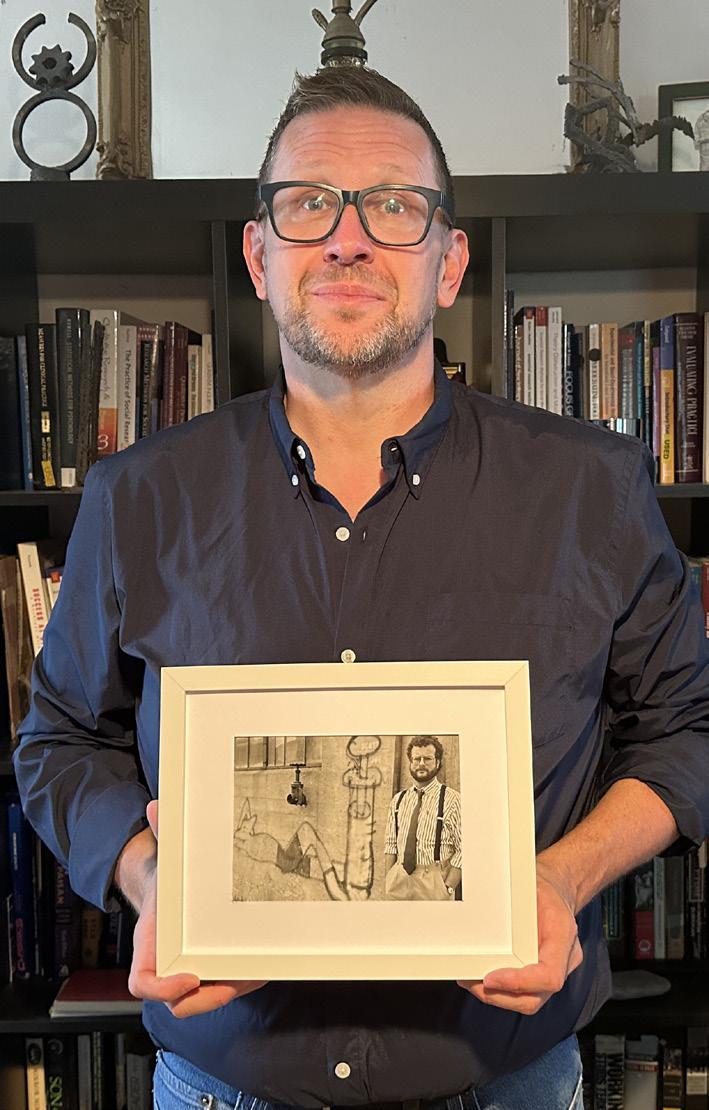
BTQ+ community and the issues surrounding it, even from the onset of his career at the University of Oregon. His timing was indeed right as he was surrounded by the issues of the day, from ballot initiatives that threaten our community through the AIDS crisis and into military service by LGBTQ+ members of the armed forces.
Lee thought that the issues Shilts worked to cover “informed more of his journalism, the more experience he got because he was very much a journalist who was skeptical of the powerful. And I think his connection to sobriety in the recovery community made him a stronger ally of people who have struggled through various life circumstances, and wanting to give them a voice against the powerful who could otherwise overlook them or exploit them.”
“When The Band Played On” will be available at your favorite book retailer on October 8. You can also pre-order until the book’s actual arrival. Lee is one Twin Cities-based author who should be supported in this next chapter of his career. It all starts with picking up or ordering a copy of this fascinating journey into Shilts’ life and career.
Looking back at the process towards getting this book into publication, Lee reflects that “it’s been a life-changing journey, without a doubt. I can’t imagine in the decade that it’s taken, looking back, I can’t imagine having done anything differently.”
When you get your copy of this book, you will understand the work that went into it.
“When The Band Played On: The Life of Randy Shilts, America’s Trailblazing Gay Journalist“
Michael G. Lee, Ph.D
Chicago Review Press
$30



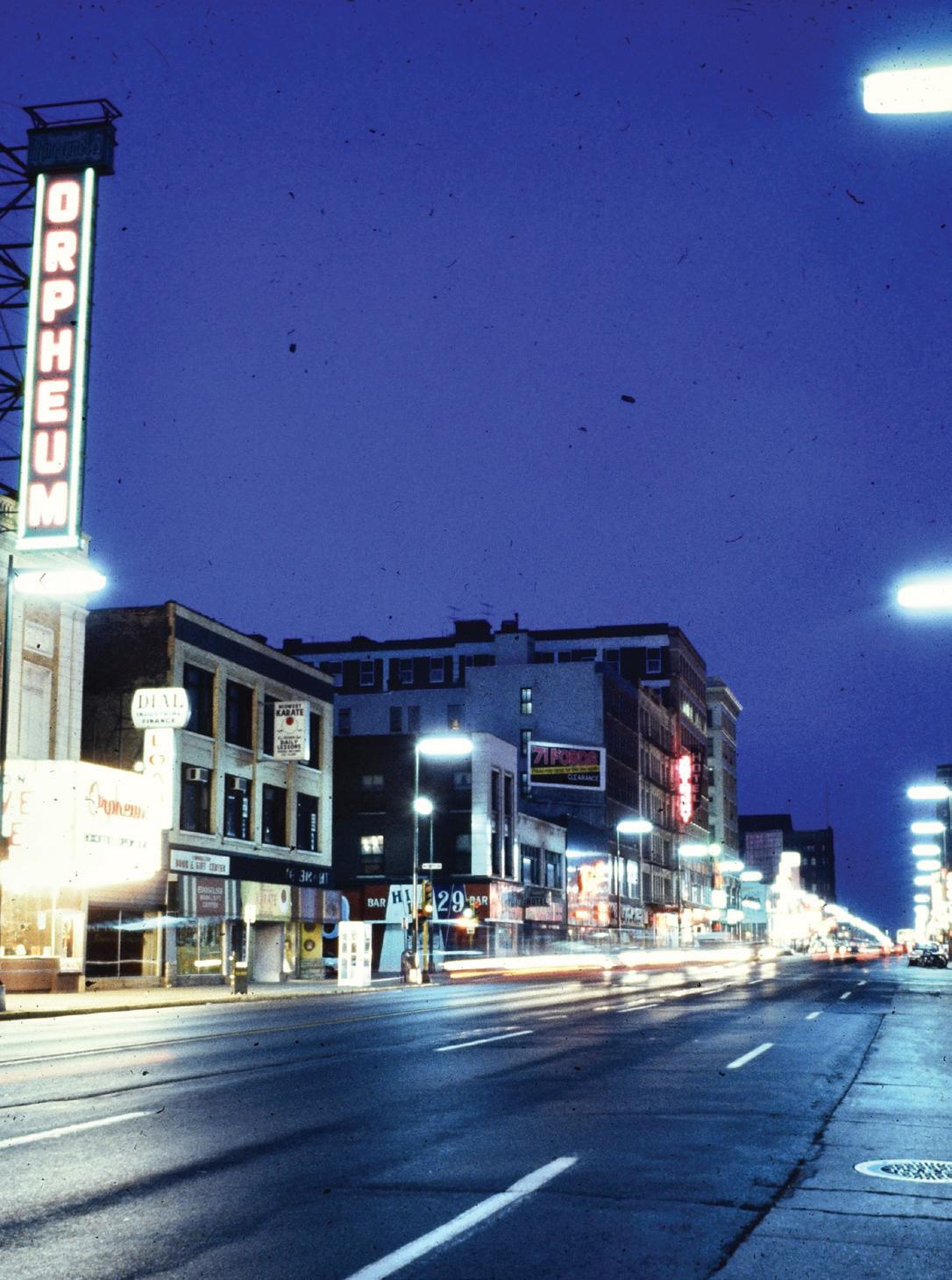


Emily Carlson found herself painting houses as a summer job after graduating with a bachelor’s in interior design. It was 2010, with the 2008 recession still looming large, when her client said, “Emily, I think you could start a business.”
She thought that was an insane idea since it was just under-the-table work for the summer. But the client, who was a business owner in her 60s, sparked a career that Carlson has now had for the last 10 years. Through that client’s referrals, Carlson was able to start her business, now named Righteous Digs, where she began as a handywoman and narrowed it down to painting halfway through.
Despite working in the business for 10 years, last summer was the first time she’d ever met another female painter, Denisea Elsola, and was able to share the frustrations and challenges of being a woman in the painting industry. From there, the two co-founders brought together the women painters they knew and started Project Rolodex.
Project Rolodex is a Twin Cities-based collective for women and queer tradespeople to find a safe community, become more visible in their fields and create a network of referrals to support each other. Project Rolodex also hosts events for other queer and women tradespeople to meet and connect, and are hoping to host events to connect them with contractors and people to help break them into the field.
They started with four members nine months ago and have since grown to fifteen. They’re hoping to be able to provide this space for all queer and tradespeople in the Twin Cities and also help women, families and the LGBTQ+ community feel comfortable with the tradespeople who are working in their homes.
“To offer that to the community and to give them a safe place to choose the people who work on their homes is also a big part of our passion,” Carlson said.
Women and queer people in trades are faced with a lot of stereotypes and harassment while on the job.
Elsola, the owner of TheArtGoddess, started in the painting industry with her dad about 25 years ago and said it wasn’t until she did jobs alone that she faced stereotypes from men, such as assuming that she didn’t know what she was doing or telling her to be careful. She said she’s also been blamed for previous painters’ messy work, such as paint drips on the baseboard.
“Being belittled when you’re doing your job is a feminist issue all the way,” Elsola said.
Jo Nowak, a queer member of Project Rolodex and owner of GreyDuckPainting, said she feels safer when she’s working the job with another woman. She connected with Project Rolodex after finding that their goals of giving back to the queer community and helping queer individuals get into the business aligned.
Carlson said she’s had clients watch her work for hours on end, try to get her to go out to dinner with them and has even had to fire a client for how uncomfortable he was making her. She said they’ve found they are also often held to a higher standard than men who are working the same job.

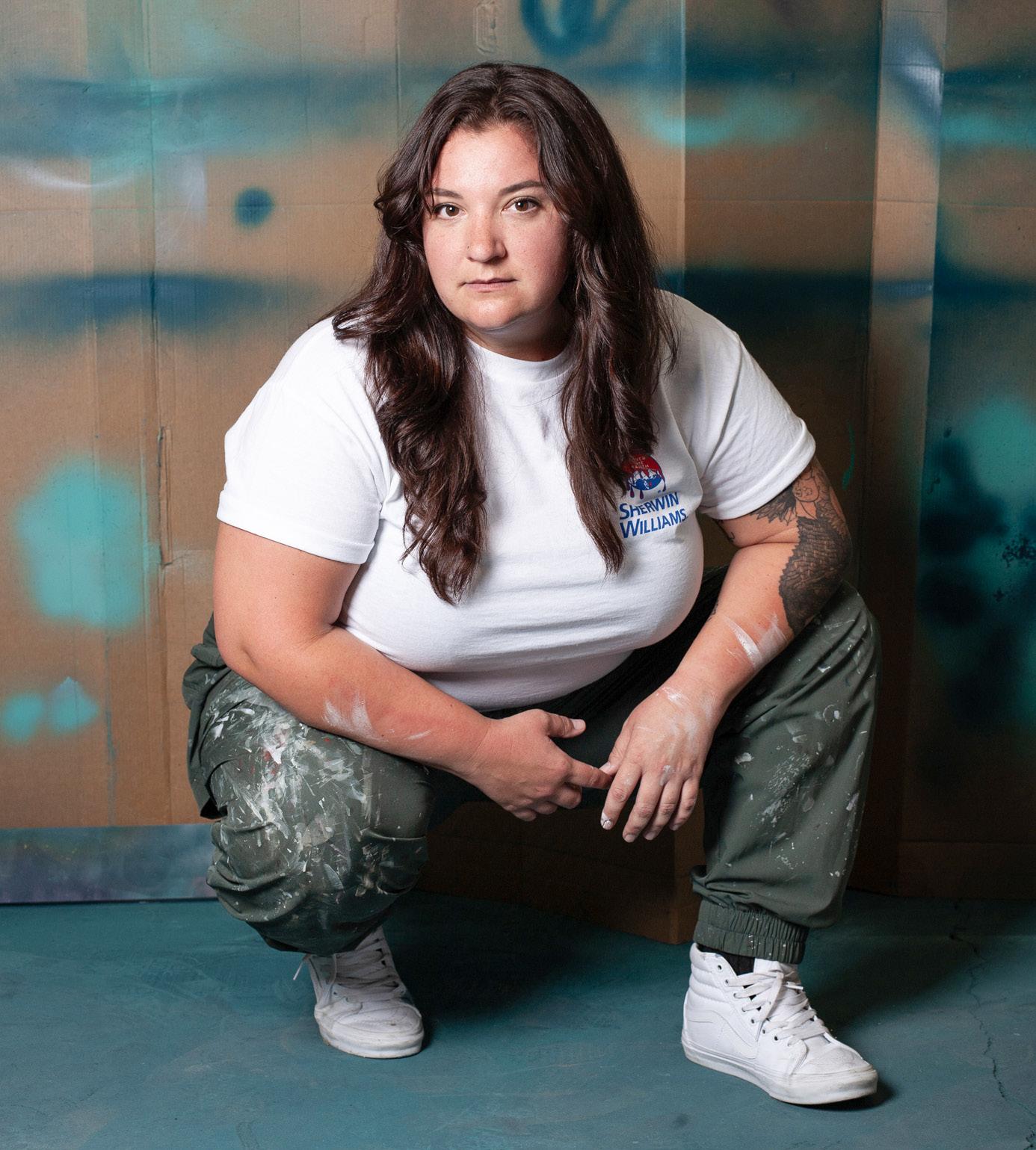


“Guys get away with anything, any behavior on job sites and any level of craftsmanship, and we have to be perfect just to be considered acceptable and to be in the room,” Carlson said.
Since women and queer people make up such a small portion of the trade industry, about 4%, the industry doesn’t see a point in investing in them, so they chose to invest in themselves, said Carlson.
Project Rolodex fosters the growth of small businesses while expanding each company’s network and recommendations of people they know and trust will do a good job, according to Penny Erickson, a general contractor at Blackrock Exterior, a woman-owned and operated contracting business.
“For us, it’s finding a community and finding people we can back up and know that these are the people we want working with us,” Erickson said.
The three pillars in their mission are revenue, representation and resources, where they hope to be seen in the industry, increase revenue for underrepresented women and queer tradespeople and provide them with resources to advance their skills and break into the industry, according to Carlson.
Moving forward, Carlson said she hopes to build brand partnerships to increase representation and bring awareness to the issues they face. Elsola also wants the representation to bring awareness to the trades as an option for young women and queer people.
“We need to represent women and queer people in the trades so younger generations feel welcome and open to the opportunity to explore this career path,” Carlson said.
As they’re starting up, Project Rolodex is focused on bringing in new members to build a directory of people for the community to rely on and feel safe and comfortable working with. They invite all queer and women tradespeople to get involved with Project Rolodex.
“We’re out here, we’re hard workers and we’re contributing to the community in a really positive way,” Nowak said.
Carlson’s passion stays strong as she continues to speak up about the issues women and queer tradespeople face, work to bring representation and grow Project Rolodex to make sure they’re taken seriously in the industry.
“I want to change the world, but that’s too big of a mouthful to chew,” Carlson said. “We can’t get the resources and the revenue without representation, and no one’s gonna take us seriously until there’s numbers.”



The former Farwell Ozmun Kirk building is now the location of an innovative apartment complex striving to create an environment that highlights community and utilizes history as its foundation. The former manufacturing site, acquired by Buhl Investors in 2019 and renamed “Farwell-on-Water,” had the reputation of being the largest distributor nationwide of goods and lumber to stores like Hardware Hank and Ben Franklin.
Lavender was able to get the scoop on Farwell-on-Water from Buhl Investors’ CEO, Pete Deanovic. He shared that a project at this scale required great attention to detail and “connecting with community leaders and members, in addition to working in partnership with the City of St. Paul, to ensure they received feedback that informed the historical significance of the site and how it could add value today.”
The intention to preserve the historical essence of the community starts with the community. The Farwell Ozmun Kirk building had artist production studios, and the project developers were devoted to curating a plan to preserve them. This meant “getting ADA accessibility and a working elevator, among other improvements,” Deanovic says. ADA accessibility also required getting the building up to code to accommodate any patron utilizing the spaces.
To emphasize the partnership between Buhl Investments and the city of St. Paul, a new sewer system was installed to eventually incorporate residential housing. This project birthed Esox House. The name Esox “refers to the market rate apartment building on-site, named after the genus Esox, or Northern Pike,” Deanovic says.
The location of Esox is unmatched because of its access to nature. What better way to spend the evening than a short bike ride to Pickerel Lake? Along with residential additions, more spaces for open areas were highly encouraged and anticipated.
The area is very connected and aligned with the idea of a green future because of features such as trails that groove the river, spaces full of lush vegetation and views of the Mississippi River. This is a true testament to the growth and intention of this community, as is the Farwell Yard. This space was developed to replace a parking lot “with the intention being to gather people together there,” Deanovic says. Plans to continue to socially develop this outdoor space include movie showings and food trucks that would be regular vendors.
When asked what would make this residential development transformative compared to other communal areas, Deanovic’s response completely captures the essence of a beautiful wrinkle in time. He explains, “This is truly a mixed-use space that’s intended for people to interact with nature and each other. There are two beautiful apartment buildings on the site that each have advantages, one being Esox House (a market rate apartment) and the other is Harbourline, income-restricted apartments. Both offer unique experiences and amenities for residents.”
Features that this community plans to emphasize include social events, gatherings and environ-
mental sustainment. A part of the history that is intricately woven into this innovative project is the vinyl listening room “that features records from many artists who have played at Harriet Island Park, as well as an outdoor sauna from Duluth company Cedar and Stone. Harbourline features an outdoor community garden, community room and mural depicting the neighborhood’s history by artist Ernesto Ybarra,” Deanovic says.
This initiative directly speaks to the preservation of history as well as the advancement of this community. This is only the first phase of development for this project. There are plans to incorporate commercial attractions such as restaurants and recreation spaces in 2025.
Both residential communities, Esox House and Habourline, are inclusive of the LGTBQ+ community and host many resident events. These events are connected to the broader community. This ensures that “residents know about things to do locally (like the Minnesota Yacht Club Festival on Harriet Island) and can find ways to connect with one another and feel a sense of belonging,” Deanovic says.
Great benefits have come from incorporating more residential units that are categorized as market-rate as well as income-restricted. To celebrate such accomplishments, St. Paul mayor Melvin Carter showed his support at the ribbon cutting for Esox and Harbourline.
Farwell-on-Water is the definition of innovating from within; repurposing a vacant lumber and distribution site and creating a colorful and abundant community that focuses on sustainability and unity through history and creative expression. Buhl Investors have centered this project on artistic giveback in the most beautiful ways, from Deanovic sourcing commissioned art for Esox House to even creating a few of the art installations. To add to the personality, there is even a state-of-theart stone fireplace that is gracefully paired with a community dining table.
All of this would not be made possible without the City of St. Paul, local community leaders and advocates, as well as those who occupied the space prior to it becoming a hub intended for community that stands on the shoulders of its history.
Farwell-on-Water
102 W. Water St.
St. Paul, MN 55107
www.farwellonwater.com






It isn’t just Dorothy who thinks there’s “no place like home.” Having a safe, comfortable space to live is one of the most important parts of our daily lives — and something we should never take for granted. We do spend most of our lives at home, after all!
What makes a house into a home? It might seem like a cliché question, but it’s an important one. OA Design + Build + Architecture, a small, awardwinning design-build-architecture firm devoted to green, client-focused building, is dedicated to answering just that.
Michelle Little, the general manager of OA Design + Build + Architecture works every day to make clients’ perfect home dreams come true. In her own words, her job is to “oversee the company from the design team to the production crew in the field, ensuring smooth coordination with every trade partner in between.” She says “For 30 years we’ve strived to bring creative and unique architecture solutions to homes that reveal the potential for form and function and an environment our clients will thrive in.”
When clients come to OA Design + Build + Architecture, they know they’re getting the absolute best service around. Little says, “It is our job to understand your aesthetic as well as the architectural style of both your home and the community it is part of.”
In other words, you get to tell the design team exactly what you want, and they’ll work to make it happen for you! Little continues, “The designer is the filter between what you want, what your house wants, and what constitutes exceptional design. They have both the knowledge and experience to create a functional and amazing space you will love.”
OA Design loves a good challenge, too. They’ve got experience designing and building totally one-of-a-kind homes because they form real relationships with their clients. Little says, “We often work with clients who bring us unique, challenging spaces. Our design team possesses some of the most creative and artistic mindsets, transforming dysfunctional spaces into ones that are not only functional but also inspiring, engaging, and uniquely tailored to our clients’ needs!”
Whether clients are looking for contemporary styles, Victorian aesthetics, modern craftsman vibes, or anything in between or beyond, OA Design can create your perfect home for you.
Little says the best part of her job at OA Design is “to witness a vision come to life and see the joy on our clients’ faces during the final reveal.”
The creation of a home — what could be more beautiful?





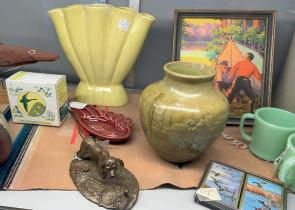
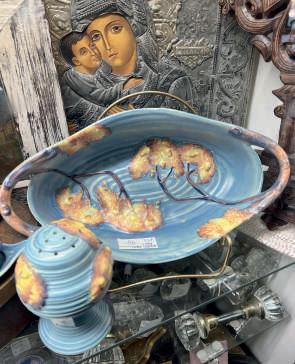


Not only will OA work tirelessly to ensure your home is exactly what you want, but when you go to OA Design + Build + Architecture, you can expect to be treated with the utmost respect too. This includes full transparency with pricing, timelines, and what’s possible to achieve with your home.
Little says, “We are fully transparent with our pricing! At OA, having separate design and build contracts is integral to our company’s process. Design costs money and it is its own project for a good reason.”
Because they separate their design and building teams, you can rest assured that the design team isn’t just rushing you into construction, and the construction team will handle your designs with deep care and respect. Little adds, “You will know exactly what the cost is and why!”

OA takes a lot of pride in being upfront with customers, and this only helps to further build great relationships between clients, designers, and builders.
When it comes time to build your home, OA has a very straightforward process. They build it!
Little says, “When construction starts, materials have been ordered, dates have been set, permits have been pulled. Your project is assigned a project manager and a lead carpenter who will visit your site frequently. You will have biweekly meetings with your project manager to address any concerns and offer updates throughout the project.”
This method will help you feel connected to your home’s construction the entire time.
Not only is OA Design + Build + Architecture client-focused and dedicated to delivering the best possible home for you, but they’re devoted to green living and sustainability as well.
Little explains, “We use certified lumber, arsenic-free material, recycled and engineered lumber, composite decking, metal roofing, and insulation. All debris (except asphalt roofing) generated from the project is sorted through for recyclable material. We install energy-efficient heating systems, like radiant in-floor heating, hybrid baseboard radiators, and energy re-capturing systems. Advanced framing techniques means we consume less lumber. Better insulation methods means that you need less energy to heat and cool your home.”
So, back to the original question: what makes a house into a home? Easy. OA Design’s answer, in its simplest form, is that you do.
Little words it beautifully: she says, “When I consider what we’re doing, I realize that we are entering some of the most intimate spaces in people’s lives — bathrooms, bedrooms, kitchens. These are spaces where countless memories have been made and will continue to be created, spaces that hold deep emotional significance. These are some of the most treasured places in people’s lives. When we approach our work with the mindset that we are crafting spaces where people will create their most cherished memories — a space where they’ll bring their newborn home, gather with grandparents, celebrate birthdays, or enjoy family dinners every Saturday — we elevate our purpose. These projects aren’t just project #589; they are special endeavors for very special families, we are helping them build their legacy.”
Basically, you don’t go to OA Design just to construct a house, you go to them to build a home.



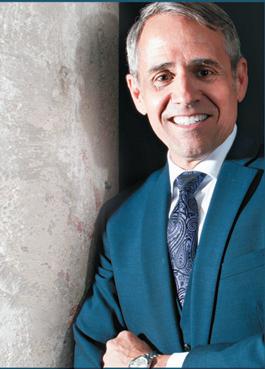



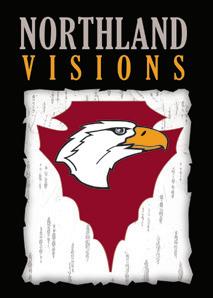
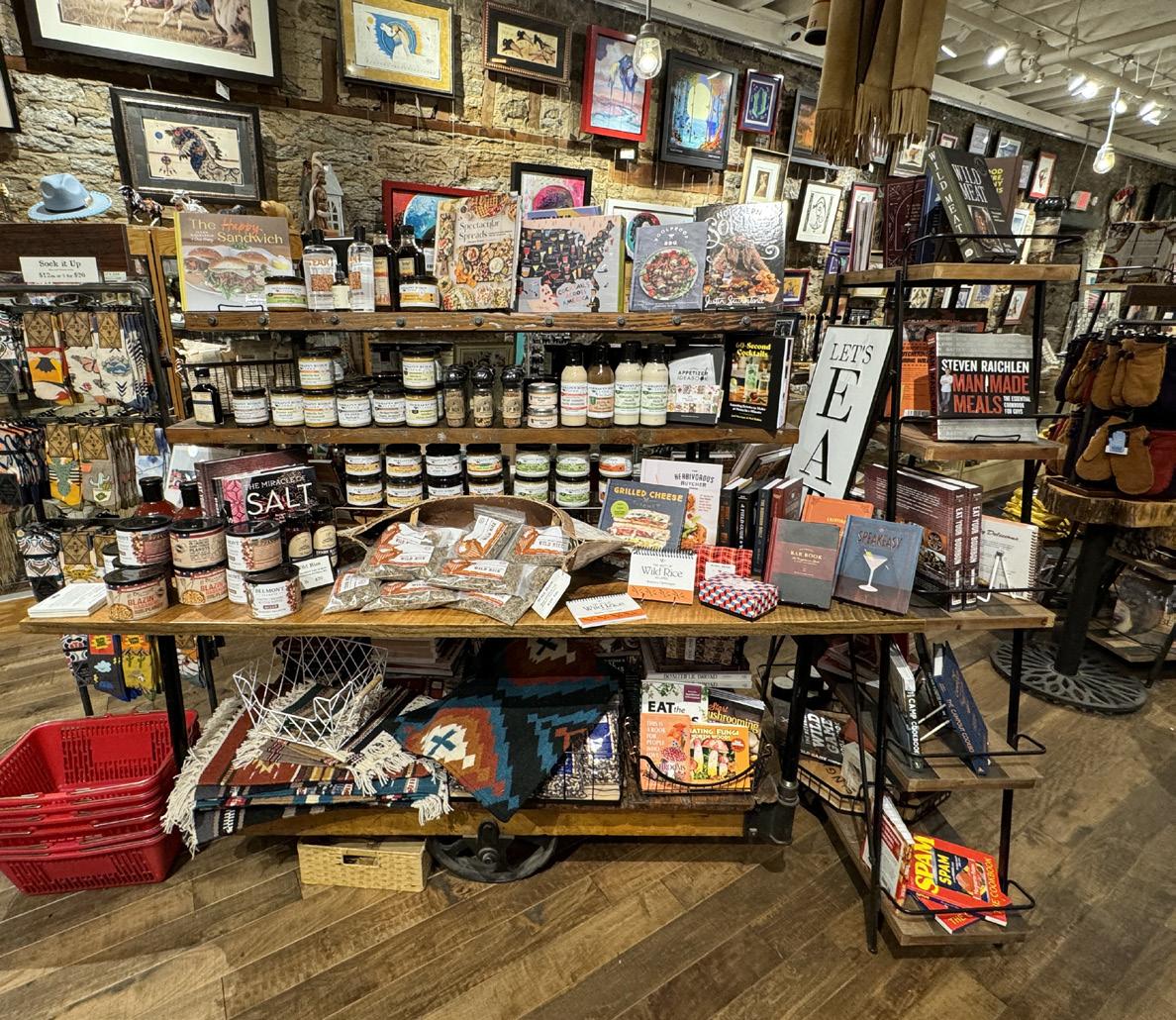
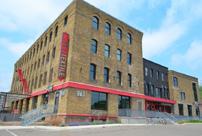
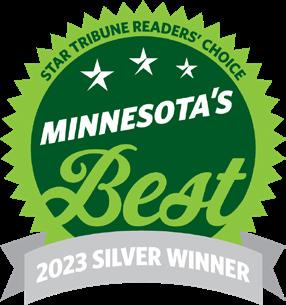



When Dean Engelmann, Principal at Tangletown Gardens and Wise Acre Eatery, met his future business partner Scott Endres at the University of Minnesota, the two horticulture students had no idea they’d someday be contemplating raising chickens among solar panels.
But the heritage they have in common — both are “farm boys” from the get-go — combined with hard work and an eye for innovation, has guided them toward the creation of an agricultural partnership with SunShare, an otherwise non-agricultural corporation operating electricity-generating solar farm installations in several states.
This partnership (located in Plato, Minn., and known as Buffalo Sun) forms an inspiring narrative of enterprise driven by a love of the land to create a “turnkey” model of using that land not only to generate electric power for the grid but also to grow crops, raise livestock, and contribute to Engelmann and Endres’s other agriculture-based enterprises located in South Minneapolis (54th and Nicollet): Tangletown Gardens garden center and the nearby Wise Acre Eatery, a restaurant featuring farm-fresh produce, poultry and meats.
Engelmann related that the Tangletown enterprises started just over 20 years ago with the founding of the South Minneapolis garden center and have since expanded to the operation of Wise Acre Eatery and a 142-acre “fully integrated, regenerative agricultural farm” located next to Buffalo Sun in Plato, Minn. The Buffalo Sun facility is set to assist the larger farm in providing the products sold in the garden center, as well as the produce, poultry and meats served at Wise Acre. The Plato agricultural pursuits also contribute to Tangletown’s Community Supported Agriculture program which brings subscribers fresh food. Tangletown offers a design service, too. Taken together, all of Engelmann and Endres’ enterprises employ about 100 people who share their bosses’ “passion” for the land and its prudent use in agriculture and related activities.
The “agrivoltaic” Buffalo Sun project which Tangletown and the SunShare corporation operate occupies a seemingly-slight eight acres of land. The small land area was first sought after by SunShare to lease from the land owner for use as one of the company’s signature “solar farm” installations, which
allows subscribers to cut their energy bill by claiming a stake in the power that the farm’s solar panels generate. Many among the population of the small town of Plato, however, were having none of it.
According to David Bergh, Senior Development Manager at SunShare, these local conservation-minded people were “very upfront” in their objection to taking prime agricultural land out of production for use as a dedicated solar farm. That’s when Engelmann, the neighboring land-owner, got interested in the possibility of joining forces with SunShare to use the land not occupied by the solar panels units themselves to grow crops and raise livestock, thus addressing the local people’s concern that the area finds its maximal use as agricultural land along with serving to generate power (after all, you can “drive a car” between the facility’s widely spaced solar units, according to Bergh).
Engelmann’s interest in the Buffalo Sun project was cemented when he saw its innocuous perimeter fence. He enthusiastically noted, “The fence will provide protection, should we start to raise chickens [as planned]. The solar panels themselves provide shade. The fence will also provide support for tomatoes, cucumbers and, potentially, peas.”

Lavender Media is seeking to add a Twin Citiesbased full time Account Executive to our sales team. We are looking for an outgoing, organized, self-driven & motivated professional with excellent phone, writing and presentation skills. Candidates should enjoy working directly with clients who are interested in growing their business through Lavender advertising and event sponsorships. Candidates must be local.
Compensation: $1,500 base + commission every issue (two weeks) and an employee benefits package that includes group health, dental, life insurance and LTD.
Applicants should have experience with Mac software environment, Excel, Word, social media platforms & database software such as Filemaker Pro. They should exhibit an elevated level of organization, attention to detail, the ability to work as part of a team, effective communication, self direction, enjoys working with new people and has a natural drive to grow.
Please send your cover letter and resume to Stephen Rocheford, President & CEO stephen.rocheford@lavendermagazine.com

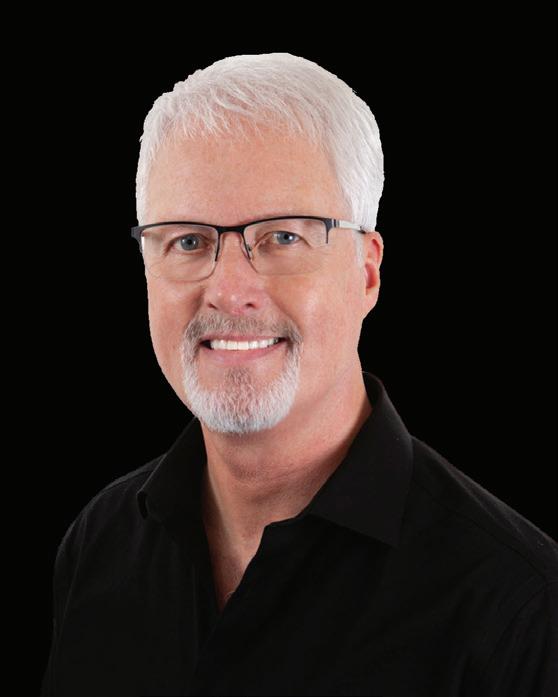












In other words, when Engelmann saw this fence, he didn’t see a barren piece of metal. He saw a tool for use in the ongoing challenge of bringing food from the land.
Buffalo Sun is currently under construction but is well on the way.
“We’ve already planted more than 100 apple trees,” Engelmann said, also noting that some vegetable plants have been installed and even bee-keeping is on the horizon. “It’s a bee yard, a vegetable field, and a chicken pasture, all coupled together.”
While the Plato, Minn. partnership may seem unique, it can actually serve as a model for other agrivoltaic installations nationwide, according to both Bergh and Engelmann. This is an expansion of the already innovative concept of the community solar garden.

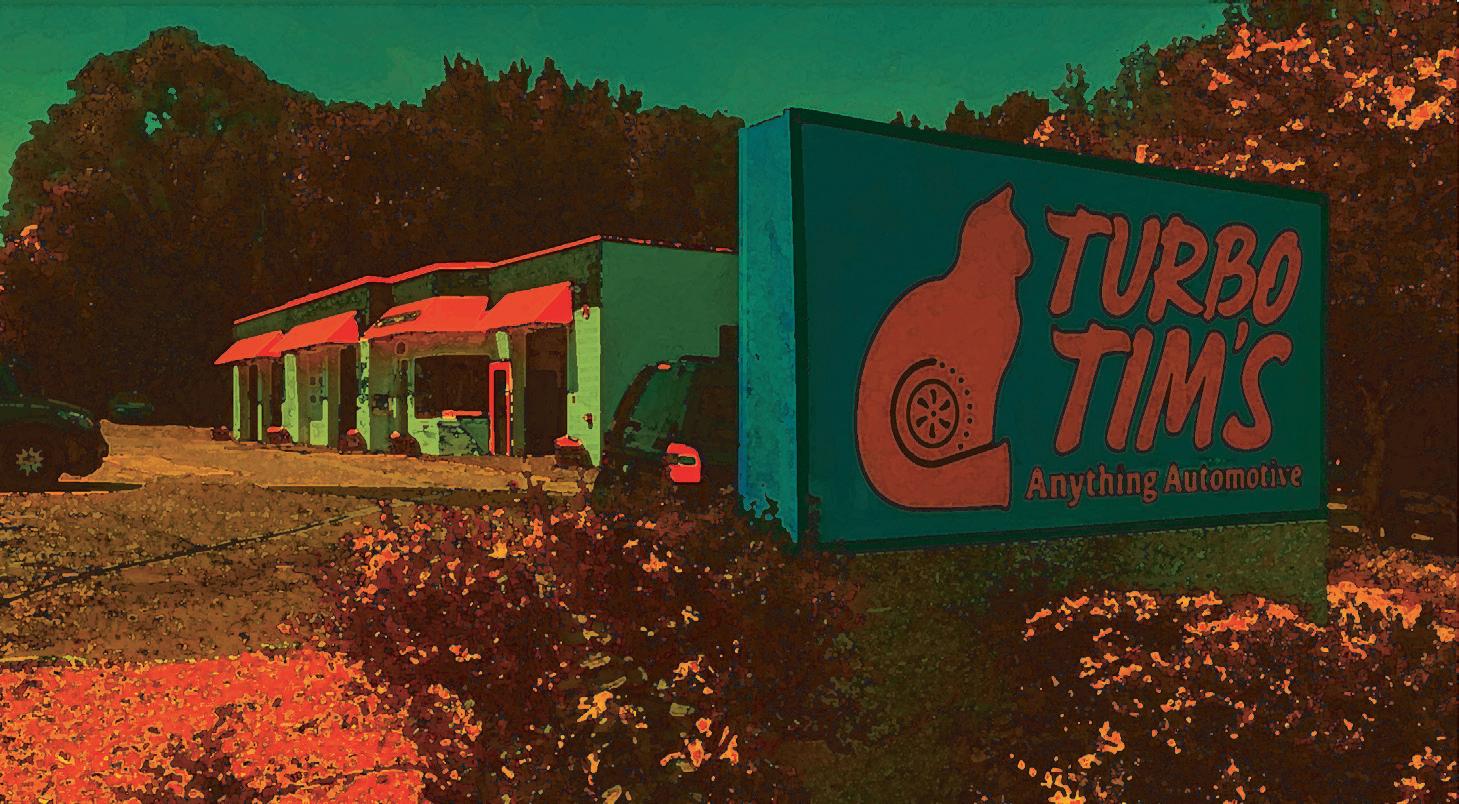
According to SunShare promotional material, the company’s community solar garden enterprise started with a conversation founder David Amster-Olszewski had with his mother, who pointed out that not all people who use fossil fuel electricity have a coal plant in their backyard, so why should everyone who wants to use solar power have to have solar panels on their roof?
Amster-Olszewski took this commonsense observation and decided to apply it toward utilizing the Colorado Community Solar Gardens Act, which helped popularize the concept of allowing apartment dwellers or those without the facilities for installing their own solar panels to subscribe

site solar generating power facility, thus lowering their electric bills and helping in the effort to develop clean electricity production technology. Bergh points out that every watt of solar energy displaces carbon monoxide which would otherwise find its way into the atmosphere via most of the more traditional means of generating power.
The company, founded in Colorado Springs and now headquartered in Denver, started creating community solar gardens in its home state but now operates five solar gardens in Minnesota with four more in development.
“And we’re expanding into other states as well,” Bergh said.
SunShare currently has more than 40 employees and, in addition to its Denver center of operations, operates a satellite office in Minneapolis.
Contrary to pundits who have questioned the viability of solar energy as an alternative to more traditional forms of generating electricity, Bergh pointed out that the land leased by SunShare for its facilities generates income for the land-owners as well as providing clean solar power which, as noted, also serves to cut subscribers’ electric bills. A win-win-win outcome.
Placing the solar panel units is a science unto itself.
“Too close together, you get shade,” Bergh said, “too far apart, you’re not using the area efficiently.”
Further, the panels on the units are designed to follow the sun, Bergh said, so every moment of daylight goes toward generating electricity.
The future of Buffalo Sun looks bright (no pun intended), but how much agricultural product can a small, mixed-use piece of land really yield?
“We do not know the answer to that question,” Engelmann said. “It’s something I’ve never done before,” he noted, while also modestly offering that his skill and experience in agricultural pursuits are considerable. “It will be a lot of trial and error.”
He concluded: “I think that if we come up with some concepts and manage it correctly, it will be far more than we can imagine!”

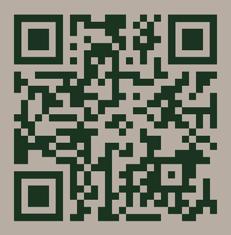
Community Connection brings visibility to local LGBTQ-friendly non-profit organizations. To reserve your listing in Community Connection, email advertising@lavendermagazine. com.
Second Chance Animal Rescue
Dedicated to rescuing, fostering, caring for, and adopting out dogs and cats into forever homes.
P.O. Box 10533 White Bear Lake, MN 55110 (651) 771-5662 www.secondchancerescue.org
Quorum
Minnesota's LGBTQ+ and Allied Chamber of Commerce working to build, connect, and strengthen for a diverse business community. 2446 University Ave. W., Ste 112 St. Paul, MN 55114 (612) 460-8153 www.twincitiesquorum.com
The Nature Conservancy
TNC is an environmental nonprofit working to create a world where people and nature thrive. 1101 W. River Pkwy., Ste. 200 Minneapolis, MN 55415-1291 (612) 331-0700 minnesota@tnc.org www.nature.org/minnesota
EVENT VENUES
Landmark Center
A classic venue, with a grand cortile and beautiful courtrooms, accommodates celebrations of all sizes. 75 W. 5th St. St. Paul, MN 55102 (651) 292-3228 www.landmarkcenter.org
GRANTMAKERS/FUNDERS
PFund Foundation
PFund is the LGBTQ+ community foundation that provides grants to students and grants to non-profits. PO Box 3640 Minneapolis, MN 55403 (612) 870-1806 www.pfundfoundation.org
HEALTH & WELLNESS
Aliveness Project
Community Center for individuals living with HIV/AIDS – on-site meals, food shelf, and supportive service. 3808 Nicollet Ave. S. Minneapolis, MN 55102 (612) 824-LIFE (5433) www.aliveness.org
Family Tree Clinic
We're a sliding fee sexual health clinic and education center, now in Minneapolis. 1919 Nicollet Ave. Minneapolis MN 55403 (612) 473-0800 www.familytreeclinic.org
Keane Sense of Rhythm
Celebrate your true self with Tap dance!
1st week free, Join us now!
2161 University Avenue W., Ste. 117 St. Paul, MN. 55114 (612) 251-4744 info@tapcompany.org www.tapcompany.org
NAMI Minnesota
(National Alliance on Mental Illness)
Providing free classes and peer support groups for people affected by mental illnesses.
1919 University Ave. W., Ste. 400 St. Paul, MN 55104 (651) 645-2948 www.namimn.org
Rainbow Health
Providing comprehensive health services for LGBTIA+ people, those living with HIV & folks from underserved communities facing healthcare barriers. 701 S. 4th Ave., #1500 Minneapolis, MN 55415
General: (612) 341-2060, MN AIDSLine: (612) 373-2437 info@rainbowhealth.org www.rainbowhealth.org
Red Door Clinic
HIV and STI screening, treatment, education, and referrals. Doxy PEP, nPEP, PrEP, and Reproductive Health. 525 Portland Ave., 4th Fl. Minneapolis, MN 55415 (612) 543-5555 reddoor@hennepin.us www.reddoorclinic.org
LIBRARIES
Quatrefoil Library
Your LGBTQ+ library and community center. Free membership, events, and e-books/audiobooks. Check us out!
1220 E. Lake St. Minneapolis, MN 55407 (612) 729-2543 www.qlibrary.org
MEDIA & COMMUNICATIONS
Radio K
Radio K is the award-winning studentrun radio station of the University of Minnesota. 330 21st. Ave. S. Minneapolis, MN 55455 (612) 625-3500 www.radiok.org
MUSEUM
Minnesota Historical Society
Create your own adventure at MNHS historic sites and museums around Minnesota. mnhs.org
Minneapolis Institute of Art
Enjoy masterpieces from all over the world & every period of human history. Free admission daily! 2400 3rd Ave. S. Minneapolis, MN 55404 (612) 870-3000 www.artsmia.org
Walker Art Center
Showcasing the fresh, innovative art of today and tomorrow through exhibitions, performances, and film screenings. 725 Vineland Pl. Minneapolis, MN 55403 (612) 375-7600 www.walkerart.org
Chanhassen Dinner Theatres
The nation's largest professional dinner theater and Minnesota's own entertainment destination. 501 W. 78th St. Chanhassen, MN 55317 (952) 934-1525 www.ChanhassenDT.com
Children’s Theatre Company
Children’s Theatre Company excites the imagination with world-class family-friendly theatre for kids, teens, and adults. 2400 3rd Ave. S. Minneapolis, MN 55404 (612) 874-0400 www.childrenstheatre.org
Guthrie Theater
Open to the public year-round, the Guthrie produces classic and contemporary plays on three stages. 818 S. 2nd St. Minneapolis, MN 55415 (612) 377-2224 www.guthrietheater.org
Minnesota Opera
World-class opera draws you into a synthesis of beauty; breathtaking music, stunning costumes & extraordinary sets. Performances at the Ordway Music Theater - 345 Washington St. St. Paul, MN 55102 (612) 333-6669 www.mnopera.org
Minnesota Orchestra
Led by Music Director Designate Thomas Søndergård, the Minnesota Orchestra, one of America’s leading symphony orchestras. 1111 Nicollet Mall Minneapolis, MN 55403 (612) 371-5656, (800) 292-4141 www.minnesotaorchestra.org
Ordway Center for the Performing Arts
Leading performing arts center with two stages presenting Broadway musicals, concerts & educational programs that enrich diverse audiences. 345 Washington St. St. Paul, MN 55102 (651) 224-4222 info@ordway.org www.ordway.org
Twin Cities Gay Men’s Chorus
An award-winning chorus building community through music and offers entertainment worth coming out for! 1430 W. 28th St., Ste. B Minneapolis, MN 55408 (612) 339-SONG (7664) chorus@tcgmc.org www.tcgmc.org
All God’s Children Metropolitan Community Church
A welcoming, inclusive, safe place to explore and discover God’s love for ALL God’s children. 3100 Park Ave. Minneapolis, MN 55407 (612) 824-2673 www.agcmcc.org
Hennepin Avenue United Methodist Church
Everyone is welcome at Hennepin Church! Vibrant Worship. Authentic Community. Bold Outreach. 511 Groveland Ave. Minneapolis, MN 55403 (612) 871-5303 www.hennepinchurch.org
Plymouth Congregational Church
Many Hearts, One Song; Many Hands, One Church. Find us on Facebook and Twitter. 1900 Nicollet Ave. Minneapolis, MN 55403 (612) 871-7400 www.plymouth.org
St. Philip's Lutheran Church
We invite and welcome those of every spiritual background, ethnicity, gender orientation, or economic situation. 6180 Hwy 65 Fridley, MN 55432 (763) 571-1500 www.splcmn.org
University Baptist Church
Creating safe and inclusive spaces for 175 years, UBC stands proudly with our LGBTQ+ family. 1219 University Ave. SE Minneapolis, MN 55414 (612) 331-1768 www.ubcmn.org
Westminster Presbyterian Church
An open and affirming congregation, welcoming persons of all sexual orientations, gender expressions and identities. 1200 Marquette Ave. Minneapolis, MN 55403 (612) 332-3421 www.westminstermpls.org
Friends & Co
Fostering meaningful connections for older adults for 50+ years. Offering quick drop-in chat line, phone & visiting companionship services. 2550 University Ave. W., Ste. 260-S St. Paul, MN 55114 (612) 721-1400 www.friendsco.org
Lyngblomsten Community Services
Empowering older adults to live well at home through caregiver support, memory-loss enrichment, & wellness education.
1415 Almond Ave. St. Paul, MN 55108 (651) 632-5330 www.Lyngblomsten.org/CommunityServices
Senior Community Services
Providing non-medical services that meet the changing needs of older adults & support their caregivers. 10201 Wayzata Blvd., Ste. 335 Minnetonka, MN 55305 (952) 541-1019
www.seniorcommunity.org/lav
Lutheran Social Service of Minnesota
Serving all Minnesotans with personcentered services that promote full and abundant lives.
lssmn.org | (651) 642-5990 | (800) 582-5260
Employment Opportunities | lssmn.org/careers PICS (Partners in Community Supports) | picsmn.org
Pooled Trust | (888) 806-6844
Supported Decision-Making | (888) 806-6844
Discover St. Louis Park
Minnesota’s Sweet Spot! Visit us for exceptional dining, attractions, shopping, hotels and event space.
1660 Hwy 100 S., Ste. 501 St. Louis Park, MN 55416 (952) 426-4047
www.DiscoverStLouisPark.com
Locally

Estimates 7am-4:30pm


Account Executive. Lavender Media is seeking to add a Twin Cities based full time Account Executive to our sales team. We are looking for an outgoing, organized, self-driven & motivated professional with excellent phone, writing and presentation skills. Candidates should enjoy working directly with clients who are interested in growing their business through Lavender advertising and event sponsorships. Candidates must be local. Compensation: $1,500 base + commission every issue (two weeks) and an employee benefits package that includes group health, dental, life insurance and LTD. Applicants should have experience with Mac software environment, Excel, Word, social media platforms & database software such as Filemaker Pro. They should exhibit an elevated level of organization, attention to detail, the ability to work as part of a team, effective communication, self direction, enjoys working with new people and has a natural drive to grow. Please send your cover letter and resume to stephen.rocheford@lavendermagazine.com




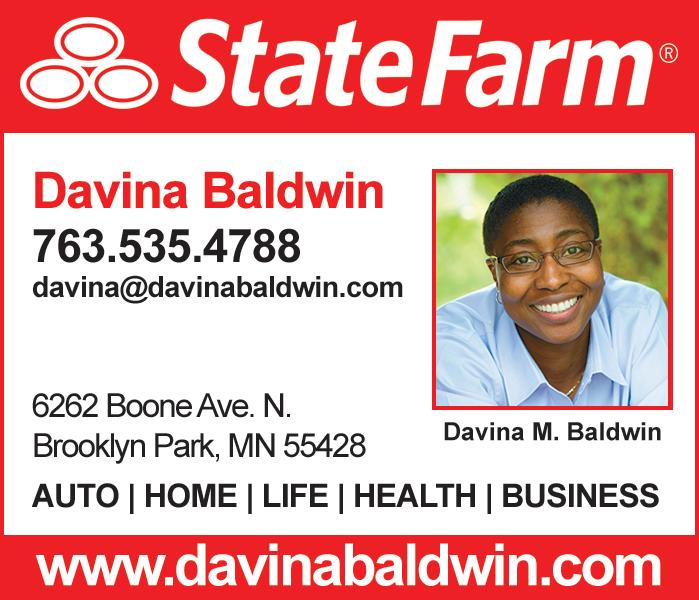


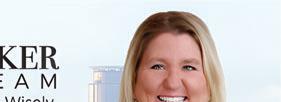







According to one less-than-reliable source, it’s a place where the residents are forced to make lanyards and moccasins, where the residents are fed Seafood Medley-brand cat food for dinner, where the residents are locked into their rooms and forced to pretend to be having fun for brochure photos. This place is the bane of the goldiest Golden Girl’s existence.
This place, of course, is Shady Pines Retirement Home.
The threat of consignment to an “old folks’ home” can make for a dependable sitcom callback gag, but it can also reveal primal fears that people experience when considering, passingly or not, their twilight years. One might be tempted not to take a chance with such consideration, to ignore it, to languish in the warm safety of Not Now … but another option is within easy reach, taking the redoubtable work of a non-profit organization dedicated to a specific sort of empowerment.
As stated on their website, “The LGBTQ+ Real Estate Alliance was launched in June 2020 by leading members of the real estate industry. Influential real estate professionals and allies joined with other members of the LGBTQ+ community to create a new voice in real estate.”
That new voice manifests most resonantly as the Alliance’s LGBTQ+ Real Estate Report. Gleaned from forty sources, one of which is the Alliance’s own annual survey, this year’s version, the document addresses some of the unique difficulties and dilemmas that beleaguer unicorns put out to pasture. In fact, according to the 42-page document, “more than 70% of aging LGBTQ+ Alliance members believe it is harder for an LGBTQ+ person to choose a place to live in retirement than straight people.”
Statistically speaking, an Alliance member is likely to have greater equity than a heterosexual American elder, the report supposes, and many members consider liquidating that equity in order to springboard into their laborless dotage. That springboard might well sproing members to a new state … or even a foreign country.
These members belong to a single, grey generation, one to whom no small collective debt is owed.
“Baby Boomers are … credited with changing the face of LGBTQ+ life in our nation,” notes the Alliance’s outgoing president Anita Blue in a recent press release. “Baby Boomers suffered, endured, fought for equality, broke barriers, and improved the lives of so many.”
Photo courtesy of BigStock/Peter Mooij
But all society-wide improvements come at a broad and sneaky cost. “Now that so many in our community are aging, we wanted to gain insight into what retirement living might look like for LGBTQ+ people,” Blue concludes.
The primary function of the Alliance, as its name implies, is bringing community members together for a common cause … and the second resource serves as a means to that laudable end.
“[The LGBTQ+ Real Estate Alliance] created LGBTQplusHomes.com to connect current and potential LGBTQ+ home buyers and sellers with our more than 4,000 members of the LGBTQ+ Real Estate Alliance, one of the largest LGBTQ+ trade organizations in the nation,” explains incoming Alliance president Justin Ziegler during an exclusive interview with Lavender. “Our members are either part of the LGBTQ+ community or allies who recognize the challenges and concerns our community faces when buying or selling a home.”
One queer-specific challenge of selling is the consideration of where the retiree’s next residence will be. In a nation where half of its states legally allow housing discrimination, this is no small exercise.
“We need to know that LGBTQ+ people are welcomed,” Ziegler insists. “Having an agent who understands these and other concerns is critically important because you will need to be comfortable with, and trust, your real estate agent.”
If that understanding reaches its limit, another understanding might come to the fore.
“Our members are also skilled in recognizing and handling instances of discrimination if it were to occur during the process,” the new president assures. “No matter where you are looking to move, or you simply want to learn about the buying, selling or lending process, our members are available to help.”
That help is available to anyone willing to take a chance on turning Not Now into Now, achieving the happiest twilight home possible, free of extorted lanyards or extracted moccasins or even cat food for dinner. As one Golden Girl told another, “The bottom line is, if you take a chance in life, sometimes good things happen, sometimes bad things happen … but honey, if you don’t take a chance, nothing happens.”
LGBTQ+ Real Estate Alliance
LGBTQplusHomes.com
READ THE ALLIANCE’S FULL LGBTQ+ REAL ESTATE REPORT AT: https://realestatealliance.org/static/2024-lgbtq-realestate-report.pdf

